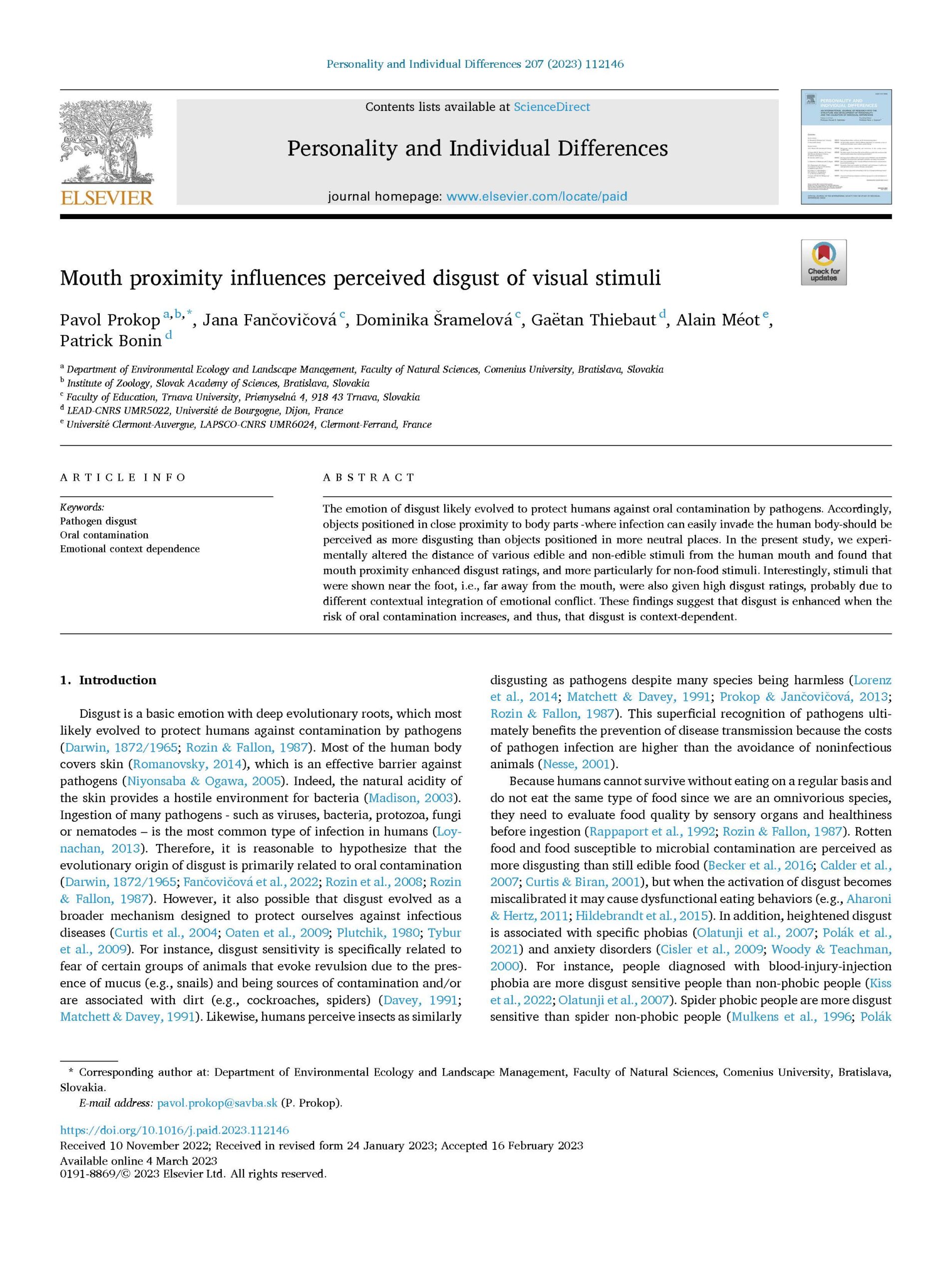The emotion of disgust likely evolved to protect humans against oral contamination by pathogens. Accordingly, objects positioned in close proximity to body parts -where infection can easily invade the human body-should be perceived as more disgusting than objects positioned in more neutral places. In the present study, we experimentally altered the distance of various edible and non-edible stimuli from the human mouth and found that mouth proximity enhanced disgust ratings, and more particularly for non-food stimuli. Interestingly, stimuli that were shown near the foot, i.e., far away from the mouth, were also given high disgust ratings, probably due to different contextual integration of emotional conflict. These findings suggest that disgust is enhanced when the risk of oral contamination increases, and thus, that disgust is context-dependent.
Mouth proximity influences perceived disgust of visual stimuli
